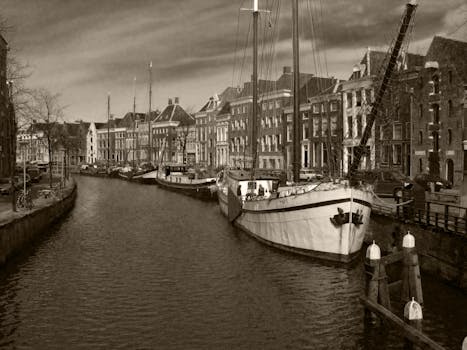
Traveling Through Time: How Europe’s Historical Heritage Shapes Modern Lifestyles in 2025
Traveling Through Time: How Europe’s Historical Heritage Shapes Modern Lifestyles in 2025. Europe, a continent steeped in history and tradition, has a unique ability to blend its past with its present. As we journey through the cities and landscapes of Europe, we find that the historical heritage of this continent continues to shape modern lifestyles in profound ways. In this article, we will explore the ways in which Europe’s rich history influences its modern culture, from the architecture that lines its streets to the traditions that bring its people together.
The Architecture of Europe: A Blend of Old and New
One of the most striking aspects of Europe’s historical heritage is its architecture. From the ancient ruins of Greece and Rome to the medieval castles of England and France, Europe’s buildings tell a story of centuries of history and cultural exchange. In modern times, this architecture continues to shape the way Europeans live and work. Many of Europe’s cities have incorporated their historical buildings into their modern landscapes, creating a unique blend of old and new. For example, the city of Barcelona is famous for its modernist architecture, which combines traditional Catalan styles with modern materials and techniques.
The Art of Europe: A Reflection of Its History
Europe’s historical heritage is also reflected in its art. From the masterpieces of the Renaissance to the modern works of contemporary artists, European art is a window into the continent’s past and present. Many of Europe’s museums and galleries are housed in historical buildings, adding to the sense of tradition and cultural heritage. The art of Europe continues to influence modern lifestyles, with many artists drawing inspiration from the continent’s rich history and cultural diversity. For example, the works of artists such as Picasso and Dalí continue to be celebrated and studied around the world, reflecting the enduring influence of European art on modern culture.
The Traditions of Europe: A Celebration of Cultural Heritage
Europe’s historical heritage is also celebrated through its many traditions and festivals. From the Tomatina festival in Spain to the Carnival of Venice in Italy, these events bring people together and provide a glimpse into the continent’s rich cultural heritage. Many of these traditions have been passed down through generations, and continue to be an important part of modern European lifestyles. For example, the tradition of Christmas markets in Germany and Austria is a beloved part of the holiday season, with many people traveling to these events to experience the food, drink, and crafts of the region.
The Technology of Europe: A Modern Take on Traditional Industries
Despite its rich historical heritage, Europe is also a continent of innovation and technology. Many of its traditional industries, such as textiles and manufacturing, have been transformed by modern technology and innovation. For example, the fashion industry in Italy is renowned for its high-quality fabrics and designs, which are often inspired by traditional Italian styles. Similarly, the automotive industry in Germany is a leader in modern technology and innovation, with many of its cars featuring advanced safety and design features.
Conclusion
In conclusion, Europe’s historical heritage continues to shape modern lifestyles in profound ways. From its architecture to its art, and its traditions to its technology, the continent’s rich history and cultural diversity have created a unique and vibrant modern culture. As we travel through Europe, we are reminded of the importance of preserving and celebrating our cultural heritage, and of the many ways in which the past continues to influence our present and future.



